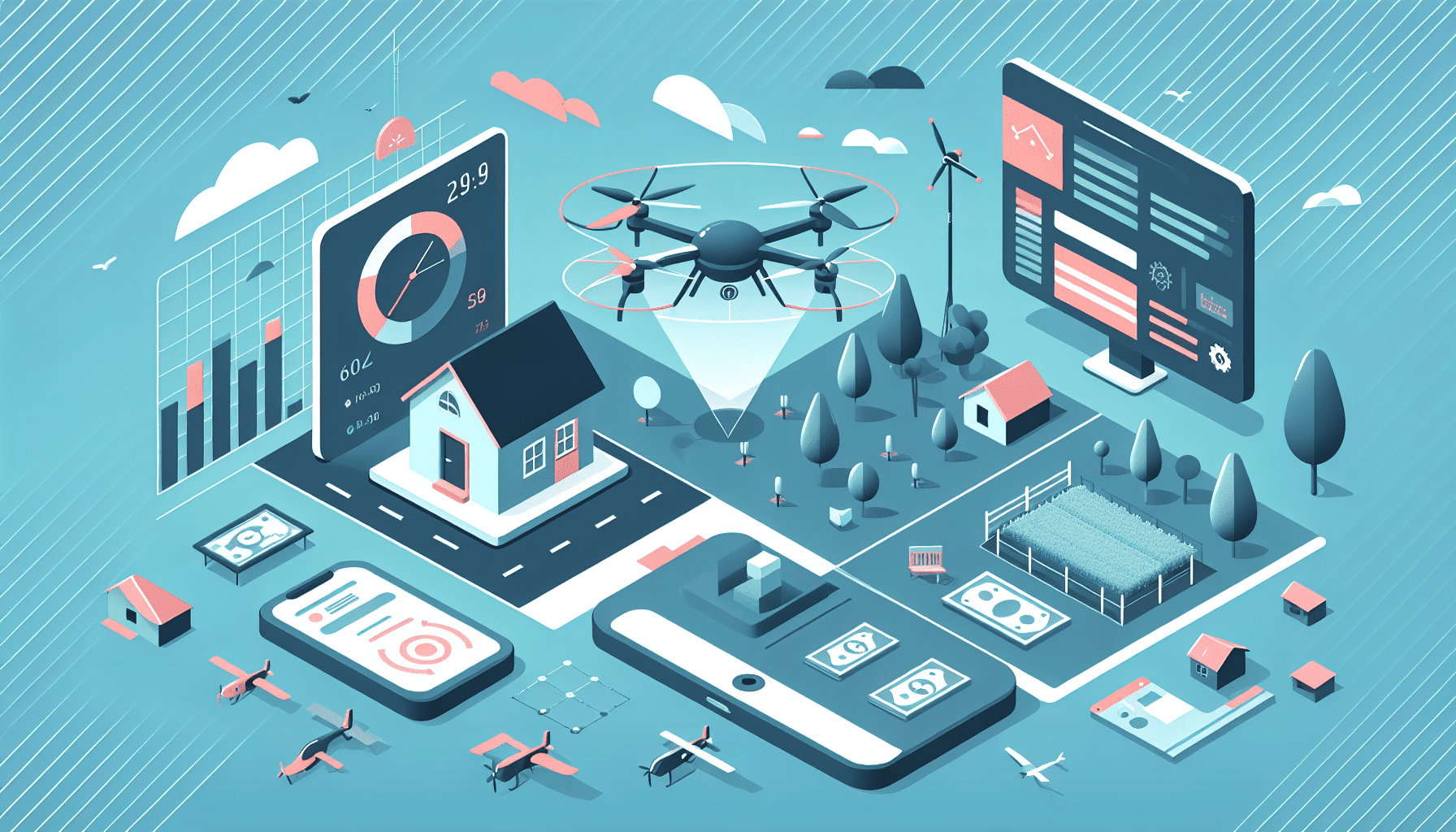Cost-Benefit Analysis of MEMAERO Drones for Businesses
In This Article
- Drone investment with MEMAERO enhances long-term value through automation and precision.
- Operational efficiencies yield faster ROI by reducing human error, labour costs, and project delays.
- Scalable architecture and flexible deployments make MEMAERO ideal for growing businesses.
- Sector-specific applications diversify the return channels from a single investment.
- Improved data accuracy and safety measures directly benefit compliance and quality assurance processes.
- MEMAERO supports sustainability goals, adding environmental and reputational value.
- Strategic implementation leads to a favourable Cost-Benefit Analysis across all commercial metrics.
Understanding Drone Investment Fundamentals
Initial Costs vs. Long-Term Value
The concept of Cost-Benefit Analysis plays a central role in evaluating the strategic inclusion of drone technology in modern enterprises. For organisations looking to innovate, investing in unmanned aerial vehicles (UAVs) such as MEMAERO drones requires meticulously weighing upfront costs against long-term benefits. Initial expenditures include hardware purchases, software integration, staff training, and regulatory compliance. However, once operational, drones deliver high utility and efficiency, lowering labour demands and optimising data capture.
Over time, these savings translate into tangible returns, whether through reduced site visits, faster service delivery, or improved accuracy in data-driven decisions. When applying a robust Cost-Benefit Analysis, businesses often discover that drone implementation yields a compounded effect on productivity and profitability. By properly contextualising capital outlay against future gains, companies are able to forecast financial viability with unprecedented precision—all while aligning with strategic growth objectives.

The MEMAERO Advantage in Commercial Use
Key Features That Drive ROI
One of MEMAERO’s distinguishing qualities lies in its commitment to commercial-grade engineering. From autonomous flight modes to high-resolution imaging payloads, these drones redefine operational productivity. Advanced obstacle detection, real-time data transmission, and AI-powered analytics make MEMAERO devices more than just flying cameras—they become intelligent assets.
Applying a detailed Cost-Benefit Analysis reveals the amplification MEMAERO offers in redundant task automation and high-risk job replacements. Construction firms can perform site inspections without human elevation risks. Agricultural operators improve seasonal yields via multispectral sensors. The overall economic value rapidly outweighs the initial expenditure, especially as each drone achieves more hours of usage across distributed tasks.
“Integrating MEMAERO drones into our logistics chain resulted in a 40% drop in survey turnaround time and a significant boost in data accuracy.” — Operations Director, UK Infrastructure Ltd.
Operational Efficiencies Unlocked with Drones
Drones excel at streamlining workflows, particularly in sectors requiring visual confirmation, mapping, or infrastructure analysis. Traditional methods, such as manual inspection or ground-based surveying, can be both time-consuming and prone to error. MEMAERO drones mitigate these inefficiencies through rapid deployment capabilities and real-time data availability.
This operational agility ensures faster decision-making, which is often vital in dynamic industries like construction, mining, or agriculture. Tasks once completed over several days can now be accomplished within hours, thereby minimising delays and increasing productivity. MEMAERO units also integrate smoothly with existing logistics and data management systems, facilitating seamless transitions without disrupting core operations.
By including these drones in your Cost-Benefit Analysis, you identify not only savings but also previously intangible operational gains—such as improved inter-departmental coordination and real-time issue mitigation. These are benefits that extend far beyond the balance sheet.
Labour Cost Reduction and Time-Saving
Labour constitutes one of the largest operational expenditures in many industries. For example, utilities, insurance sectors, and facility management sectors often require numerous field staff to perform evaluations, inspections, or status reporting. With MEMAERO drones, a significant portion of this workload becomes automated or requires fewer technicians to oversee operations remotely.
These drones not only reduce manpower hours but also free up skilled professionals for higher-value tasks. The result is a dual benefit: lower operational costs and improved talent utilisation. Within a year of drone deployment, many companies report a measurable decline in staffing redundancies, overtime hours, and associated HR costs.
Time efficiency is another vital outcome to consider in any comprehensive Cost-Benefit Analysis. What might take a ground crew several hours or even a full day to assess can be managed by a drone within 15–30 minutes. This speed translates into quicker client servicing, faster repairs or maintenance, and ultimately, enhanced business reputation.
Scalability and Flexibility in Business Models
Unlike traditional capital investments that become rigid over time, drone technology offers unparalleled scalability. MEMAERO drones adapt to a company’s growth trajectory by evolving alongside infrastructural needs. Should a business expand to new locations or add services, the same equipment can be used—sometimes supplemented by software upgrades rather than hardware replacements.
This flexibility also allows businesses to trial services in new markets without committing to extensive local staffing or resource allocation. A telecom provider, for instance, can use drones to survey potential tower locations in emerging regions before deploying full teams on-site. The low cost of such exploratory tasks enables more agile and informed strategic decisions.
By integrating drones into their business model, companies open new avenues for revenue generation. Services such as aerial imaging, live event capture, or even drone-as-a-service (DaaS) platforms become monetisable points of innovation. These extend the impact of a single investment far beyond routine operational savings.
Sector-Specific Use-Cases of MEMAERO Drones
The versatility of MEMAERO drones becomes even more evident when examined within specific industry verticals. In agriculture, for example, drones aid in crop health analysis, irrigation planning, and pest control management. Farmers can thwart crop failure before it escalates—a significant benefit in both costs and yield returns.
In real estate, high-definition aerial imagery has revolutionised property marketing. By offering panoramic vistas and site context from above, brokers enhance property appeal and close deals faster. Industrial players, such as oil and gas companies, deploy drones for pipeline inspection without the need to shut down operations, maintaining uptime and safety simultaneously.
Utilities and energy sectors benefit from thermal imaging and structure scanning, enabling preventive maintenance scheduling. Every application reinforces the positive outcome found through a targeted Cost-Benefit Analysis, proving that MEMAERO’s drones are more than tools—they are catalysts for transformation across an array of professions.
Data Collection and Accuracy Improvements
Extrapolating accurate data is vital for agile and informed decision-making. MEMAERO drones dramatically enhance this capability. With precision GPS systems, 3D modelling, and AI-assisted analytics, data acquisition becomes both more reliable and continuous. This accuracy is especially important in sectors like civil engineering or archaeological surveying, where measurement tolerances are minimal.
Avoiding manual errors saves both time and resources. Moreover, data visualisation tools integrated into the MEMAERO ecosystem make interpretation accessible and actionable. Decision-makers no longer wait hours or days for generated reports. Instead, data insights feed directly into ongoing projects, cutting delay cycles and boosting quality assurance frameworks.
This layer of intelligence significantly improves the Cost-Benefit Analysis outcomes. Not only does a company save on operational delays and avoid rework costs, but it also positions itself as a data-savvy, forward-thinking organisation in competitive marketplaces.
Risk Reduction and Safety Enhancements
Risk aversion plays a major role in corporate strategy, particularly in industries with high Health & Safety compliance standards. MEMAERO drones eliminate numerous high-risk tasks that previously required human intervention. Climbing scaffolds, scaling communication towers, or entering hazardous sites are now missions suitable for drone technology.
This improved safety profile not only reduces the risk of injury but also minimises insurance premiums and compensation claims. For companies with regulatory mandates or compliance benchmarks, drone usage becomes a clear indicator of progressive and preventative risk management policies.
In transforming physical risk into remote observation, MEMAERO drones introduce a fundamental improvement in operational models. As highlighted in many case studies, this technology serves as both a safety measure and a financial buffer—making its inclusion in a Cost-Benefit Analysis not only rational but essential.
Sustainability and Environmental Considerations
As sustainability obligations grow more demanding, enterprises are continually seeking technologies that reduce their environmental impact. MEMAERO drones provide eco-conscious solutions through their low energy consumption, reduced carbon outputs, and ability to detect environmental anomalies before escalation. Their lightweight operations cause minimal distortion to local ecosystems, unlike vehicles and heavy equipment.
Furthermore, applications in forestry management, wetlands supervision, and glacier monitoring demonstrate these drones’ utility in data collection without creating additional environmental burden. Add in their longevity—fuelled by modular upgrades and efficient power systems—and the drones resoundingly pass sustainability benchmarks in any Cost-Benefit Analysis.
Companies deploying MEMAERO drones are also better positioned to meet ESG (Environmental, Social, and Governance) criteria, a prerequisite in many investment portfolios. That alignment represents not only operational progress but also strategic brand elevation in the eyes of stakeholders and regulators.
Conclusion: Return on Investment in Aerial Tech
[CONCLUSION_CONTENT]
Great guide on cost-benefit-analysis-of-investing-in-memaero-drones – Community Feedback
What are the primary cost benefits of investing in MEMAERO drones?
Investing in MEMAERO drones helps reduce labour costs, improves data accuracy, and increases operational efficiency, leading to long-term savings.
How can a cost-benefit analysis help determine drone ROI?
A cost-benefit analysis evaluates both financial returns and operational improvements, offering a tangible way to assess the value your business gains from drones.
Are MEMAERO drones suitable for commercial and industrial purposes?
Yes, MEMAERO drones are designed for versatile commercial applications, including surveying, construction, media, and more.

